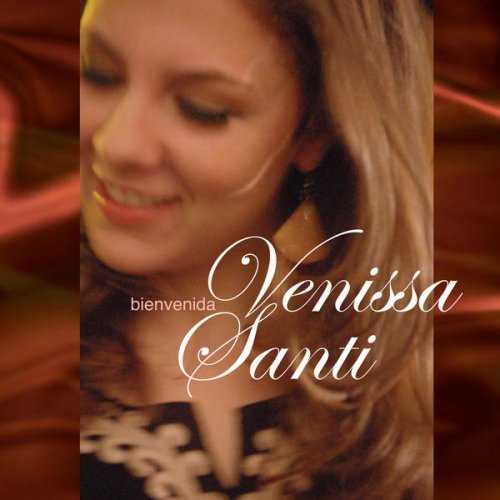Al Ayre Español - José De Nebra: Esta Dulzura Amable (2011)

Artist: Al Ayre Español, Eduardo López Banzo, María Espada
Title: De Nebra: Esta Dulzura Amable - Sacred cantatas
Year Of Release: 2011
Label: Challenge Classics
Genre: Classical
Quality: FLAC (image + .cue, log, booklet)
Total Time: 1:05:22
Total Size: 334 MB
WebSite: Album Preview
Tracklist:Title: De Nebra: Esta Dulzura Amable - Sacred cantatas
Year Of Release: 2011
Label: Challenge Classics
Genre: Classical
Quality: FLAC (image + .cue, log, booklet)
Total Time: 1:05:22
Total Size: 334 MB
WebSite: Album Preview
1 Que contrario, Señor Cantada al Santísimo Que contrario, Señor (recitado)
2 Que contrario, Señor Cantada al Santísimo Con la paz tu amor convida (aria cantable)
3 Que contrario, Señor Cantada al Santísimo Camine pues en orden todo aliento (recitado)
4 Que contrario, Señor Cantada al Santísimo Salga el hombre feliz a campaña (aria)
5 Alienta fervorosa Cantada al Santísimo Alienta fervorosa (recitado)
6 Alienta fervorosa Cantada al Santísimo Vuela, vuela fervorosa (aria)
7 Alienta fervorosa Cantada al Santísimo En su mesa divina (recitado)
8 Alienta fervorosa Cantada al Santísimo Ven, ven del Líbano (aria)
9 Sonata en mi menor Allegro
10 Sonata en mi menor Correnta viva
11 Sonata en mi menor Vivo
12 Entre cándidos, bellos Cantada al Santísimo Entre cándidos, bellos accidentes (recitado)
13 Entre cándidos, bellos Cantada al Santísimo Al tierno esposo amante (aria)
14 Entre cándidos, bellos Cantada al Santísimo Del mar del mundo horrible y alterado (recitado)
15 Entre cándidos, bellos Cantada al Santísimo Del piélago violento (aria)
16 Llegad, llegad, creyentes Cantada al Santísimo Llegad, llegad creyentes (recitado)
17 Llegad, llegad, creyentes Cantada al Santísimo Alma, bebe del costado (aria cantable)
18 Llegad, llegad, creyentes Cantada al Santísimo Esta dulzura amable (recitado)
19 Llegad, llegad, creyentes Cantada al Santísimo Espera fervorosa (aria)
"In Guatemala City I discovered, among the hundreds of forgotten musical scores that make up the rich musical archive of its cathedral, the four cantatas that are included in this recording. But how had these pieces written by a Saragossan from Calatayud who, as far as we know, never left his homeland, end up here in the overseas Guatemala?
Roll back to the second decade of the eighteenth century: Nebra, already working at the time as organist and composer in the royal court of Madrid, was only twenty years old! He had acquired great fame as an author of stage music and wrote numerous songs for the royal chapel's religious celebrations. These pieces, characteristic of solemn sacred palatine ceremonies, travelled to America. But how?
In Guatemala, among the many documents that I had scrutinised, I read the story of a journey that an eighteenth-century clergyman of the Cathedral made to Europe: among others, in order to compile modern music that would later be played by musicians of the primary Guatemalan temple. In the trunks of that very canon, in all likelihood, these songs that I now present, travelled to America. Those, as well as other compositions by Nebra and some of the most famous masters of that era.
Our Nebra was, this explains everything, a prestigious composer. His persona stands out amongst an ancient dynasty of musicians: the Nebras, who worked primarily in the province of Zaragoza. But José (Calatayud 6-1-1702, Madrid 11-7-1768) reached even more fame and prestige. His music could be described as Italianised with a Spanish air, arises at a time when the Italian style conquered the European courts; a process that began around 1700 that would mark the future of western music. As far as Spain is concerned, the Italian fashion found its primary and most exalted ambassador in the very same Queen consort Elizabeth Farnese, second wife of Philip V. Throughout his reign, music was dominated by Italian masters: the most relevant being Domenico Scarlatti who arrived in Spain in 1729." (source: linernotes of this CD by Eduardo López Banzo)
Roll back to the second decade of the eighteenth century: Nebra, already working at the time as organist and composer in the royal court of Madrid, was only twenty years old! He had acquired great fame as an author of stage music and wrote numerous songs for the royal chapel's religious celebrations. These pieces, characteristic of solemn sacred palatine ceremonies, travelled to America. But how?
In Guatemala, among the many documents that I had scrutinised, I read the story of a journey that an eighteenth-century clergyman of the Cathedral made to Europe: among others, in order to compile modern music that would later be played by musicians of the primary Guatemalan temple. In the trunks of that very canon, in all likelihood, these songs that I now present, travelled to America. Those, as well as other compositions by Nebra and some of the most famous masters of that era.
Our Nebra was, this explains everything, a prestigious composer. His persona stands out amongst an ancient dynasty of musicians: the Nebras, who worked primarily in the province of Zaragoza. But José (Calatayud 6-1-1702, Madrid 11-7-1768) reached even more fame and prestige. His music could be described as Italianised with a Spanish air, arises at a time when the Italian style conquered the European courts; a process that began around 1700 that would mark the future of western music. As far as Spain is concerned, the Italian fashion found its primary and most exalted ambassador in the very same Queen consort Elizabeth Farnese, second wife of Philip V. Throughout his reign, music was dominated by Italian masters: the most relevant being Domenico Scarlatti who arrived in Spain in 1729." (source: linernotes of this CD by Eduardo López Banzo)
Related Release:




![Afrodream - Guiss Guiss (2025) [Hi-Res] Afrodream - Guiss Guiss (2025) [Hi-Res]](https://www.dibpic.com/uploads/posts/2025-12/1765638325_a2717494732_0.jpg)
![RAS - Rød i Blå (2025) [Hi-Res] RAS - Rød i Blå (2025) [Hi-Res]](https://www.dibpic.com/uploads/posts/2025-12/1765847447_s09xuo23tcu1a_600.jpg)


